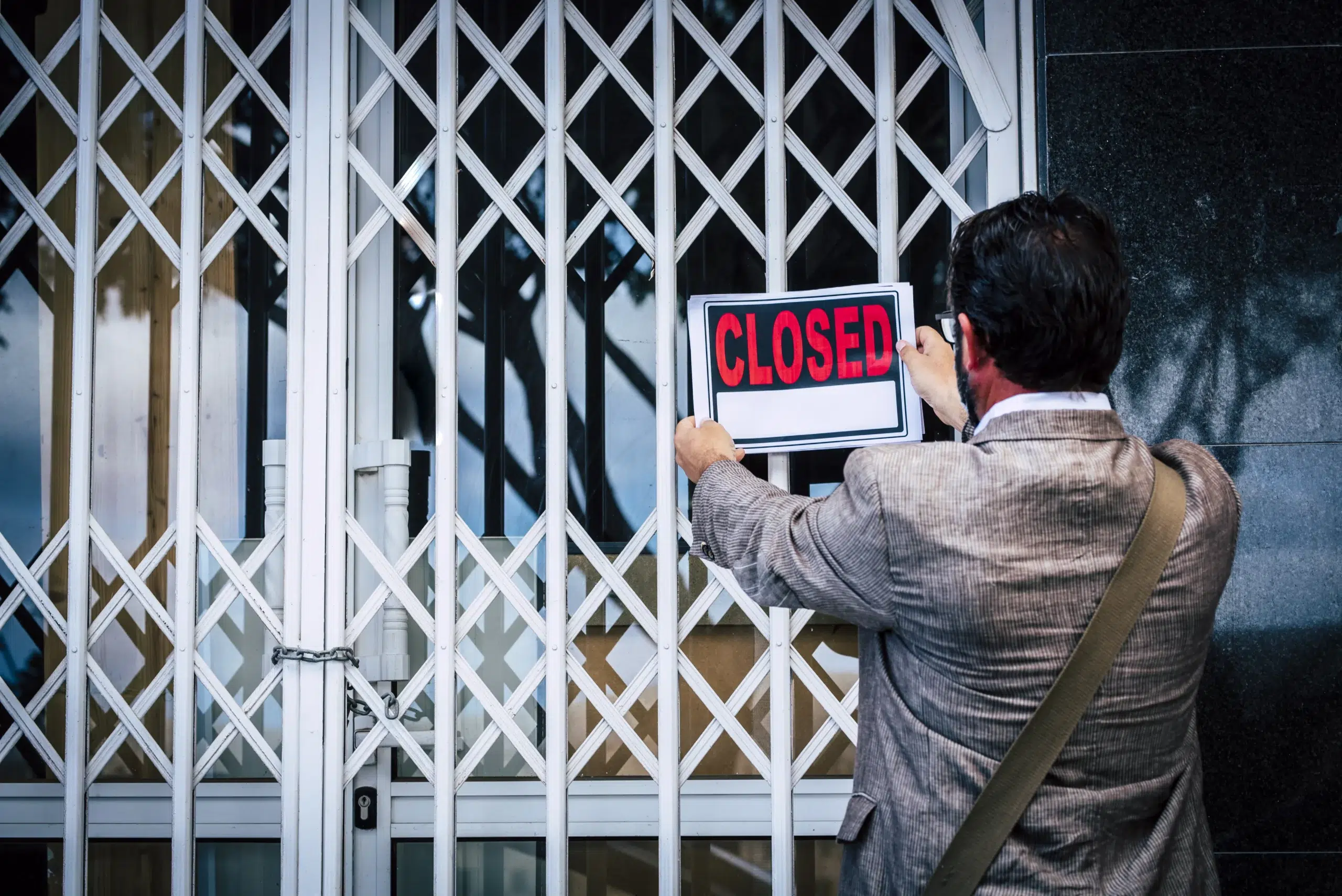Your business is more than just a building—it’s your livelihood, your future, and possibly your legacy. What happens when the government decides it needs your property for public use?
The Hidden Costs of Eminent Domain for Texas Business Owners
Picture this: You’ve spent years building your Texas business, developing loyal customers, and establishing a reputation in your community. Then one day, you receive notice that the government plans to take your property through eminent domain for a highway expansion project. While most people know they’re entitled to compensation for their physical property, many business owners don’t realize the full extent of potential compensation for business interruption and lost profits.
In Texas, eminent domain proceedings involve unique considerations for business owners that go beyond just the value of the land and building. Business interruption and loss of profits represent significant but often overlooked aspects of just compensation in these cases.
The Legal Foundation for Business Damages in Texas
The Texas Constitution provides the foundational protection for property owners in Article I, Section 17, which states that “No person’s property shall be taken, damaged, or destroyed for or applied to public use without adequate compensation being made.”
While this constitutional protection exists, Texas law handles business losses in eminent domain cases differently than some other states. Texas courts have traditionally been more restrictive in allowing recovery for business losses, but important exceptions and nuances exist that every business owner should know.
Under Texas Property Code Chapter 21, the primary statutory framework for eminent domain, compensation typically focuses on the market value of the property taken. However, Texas courts have recognized that in certain circumstances, business owners may be entitled to compensation for losses beyond just the real estate value.
Types of Business Losses in Texas Eminent Domain Cases
When your business faces condemnation in Texas, you might experience several types of losses:
Temporary Business Interruption
Even if your business can continue operations elsewhere, the transition period can lead to significant revenue loss. This might include:
- Lost sales during relocation
- Decreased customer traffic during construction
- Reduced visibility while public works projects are underway
- Increased expenses during transition periods
Permanent Business Damage
Some businesses suffer permanent damage from condemnation, including:
- Loss of established location benefits (foot traffic, visibility)
- Inability to find suitable replacement property
- Permanent customer base reduction
- Complete business closure when relocation isn’t viable
Relocation Costs
Moving a business isn’t as simple as moving furniture. Texas businesses facing condemnation often incur:
- Physical moving expenses
- New location renovation costs
- New signage and marketing materials
- Employee training for new operations
- Overtime pay during transition periods
Goodwill and Reputation Damage
Perhaps the most difficult to quantify but often most valuable is the impact on goodwill:
- Disruption of established customer relationships
- Loss of convenient location for existing customers
- Brand association with previous location
- Community presence built over years
Can Texas Business Owners Recover These Losses?
The answer is nuanced and depends on the specific circumstances of your case. Texas has traditionally followed what’s known as the “undivided fee rule,” which generally limits compensation to the market value of the real property taken. However, Texas courts have carved out important exceptions.
In State v. Central Expressway Sign Associates (302 S.W.3d 866, Tex. 2009), the Texas Supreme Court clarified that business losses may be compensable when they reflect on the market value of the property itself. In other words, if your business’s location gives the property special value above ordinary market value, that premium may be compensable.
Additionally, the Texas Property Code Section 21.043 provides that if a portion of a property is condemned, the property owner can recover damages to the remainder of the property. Business losses may be considered as an element of these remainder damages when they directly impact the property’s market value.
Proving Your Business Losses in Eminent Domain Cases
If your Texas business faces condemnation, documenting your losses becomes critical. Courts typically require:
- Detailed financial records showing historical performance and projections
- Evidence of causation between the taking and business losses
- Expert testimony on business valuation and loss calculation
- Market analysis showing location value and relocation challenges
The burden of proof falls on the business owner, making thorough documentation essential from the moment you receive notice of potential condemnation.
Compensation Calculation Methods
Texas courts may consider several methods for calculating business-related losses in eminent domain cases:
Before-and-After Analysis
This approach compares your business’s value before the taking to its value afterward. The difference, if attributable to the condemnation, may be compensable. This typically requires:
- Accurate financial statements from before the taking
- Projected financials showing the impact
- Expert analysis of factors affecting value changes
Income Capitalization Approach
This method analyzes how the taking affects your business’s income-generating potential, particularly when:
- Location is crucial to your business model
- Customer patterns are disrupted
- Operational efficiencies are compromised
Comparable Sales Method
When businesses similar to yours have faced condemnation, their experiences may provide evidence of your potential losses. This requires identifying truly comparable situations and analyzing how those businesses fared after relocation.
Real-World Texas Example: The Highway Expansion Case
Consider a recent case involving a family-owned restaurant in North Texas that had operated in the same location for 25 years. When TxDOT expanded a highway, the restaurant lost its prime corner location with high visibility and easy access.
While initially offered compensation only for the real estate, the owners successfully demonstrated that their location provided unique value to the business itself. They presented evidence showing:
- Historical financial performance tied to the location
- Customer surveys showing location preference
- Failed attempts to find comparable replacement property
- Expert testimony on the location’s contribution to business value
The court ultimately awarded additional compensation that reflected the special value of the location to the business operations beyond mere real estate value.
Protecting Your Business Rights in Texas Eminent Domain Cases
If your business faces potential condemnation in Texas, consider these protective strategies:
Pre-Condemnation Planning
When you first learn of potential condemnation:
- Begin documenting current business performance
- Research potential replacement locations
- Consult with property and business valuation professionals
- Identify unique aspects of your current location that benefit your business
Documentation Strategies
Maintain thorough records of:
- Monthly profit and loss statements
- Customer traffic patterns and sources
- Location-specific advantages
- Marketing costs tied to your location
- Customer relationships and loyalty programs
Working with the Right Team
Assemble professionals familiar with Texas-specific eminent domain issues:
- Legal counsel with Texas condemnation experience
- Business valuation professionals
- Real estate appraisers familiar with business properties
- Financial advisors who can analyze business performance trends
Negotiation Approaches
Many Texas eminent domain cases settle before reaching court:
- Present well-documented evidence of business impacts
- Focus on objective measures of business value
- Consider potential tax implications of settlement structures
- Evaluate the present value of future losses
Key Takeaways for Texas Business Owners
- In Texas, business losses in eminent domain cases may be compensable when they reflect on the property’s market value
- Documentation of your business performance before, during, and after condemnation is crucial
- Texas law provides specific protections under the Property Code and Constitution
- The burden falls on business owners to prove their losses
- Early planning and professional guidance significantly improve outcomes
- Each case depends on its specific circumstances and facts
Frequently Asked Questions
What types of businesses typically receive compensation for business losses in Texas?
Businesses with strong location-dependent elements often have stronger claims, including retail establishments, restaurants, service businesses with regular local customers, and businesses with special location-dependent permits or licenses.
How far back should I keep financial records if I’m concerned about potential condemnation?
Ideally, maintain at least five years of detailed financial records. Courts typically look for established patterns of business performance, and longer history provides stronger evidence of stable business operations.
Can I recover costs for searching for a new location?
Texas courts may consider reasonable costs directly related to finding replacement property as part of your damages, particularly when specialized property is required for your business operations.
If I’m offered a relocation assistance package, should I accept it?
Relocation assistance, while helpful, often doesn’t fully compensate for business interruption and lost profits. Consider it one component of potential compensation rather than a complete solution.
How long do Texas eminent domain proceedings typically take?
The timeline varies widely, but business owners should prepare for proceedings that might last 12-24 months or longer, especially if complex business valuation issues are involved.
What if my business can’t survive relocation?
If your business cannot reasonably relocate and must close as a result of condemnation, you may have a claim for the entire business value under certain circumstances, though these cases face particular challenges under Texas law.
Does Texas law treat partial takings differently regarding business losses?
Yes. Under Texas Property Code Section 21.042, when only part of a property is taken, the assessment must include damages to the remainder. Business impacts often factor into these remainder damages.
Don’t Face Eminent Domain Alone
When your Texas business faces eminent domain proceedings, the financial stakes extend far beyond real estate values. Business interruption and loss of profits can represent significant but recoverable damages with proper representation and documentation.
At Vestige Law PLLC, we focus on protecting Texas business owners’ rights in eminent domain cases. Our approach combines thorough business valuation analysis with deep knowledge of Texas-specific condemnation law.
Contact Us for a Consultation
If your business is facing potential condemnation, don’t wait until formal proceedings begin. Early planning and documentation can significantly strengthen your position. Contact our team to discuss your specific situation and how we can help protect your business’s full value.
Let us help you secure the complete compensation you deserve—for both your property and your business operations—when facing Texas eminent domain proceedings.



